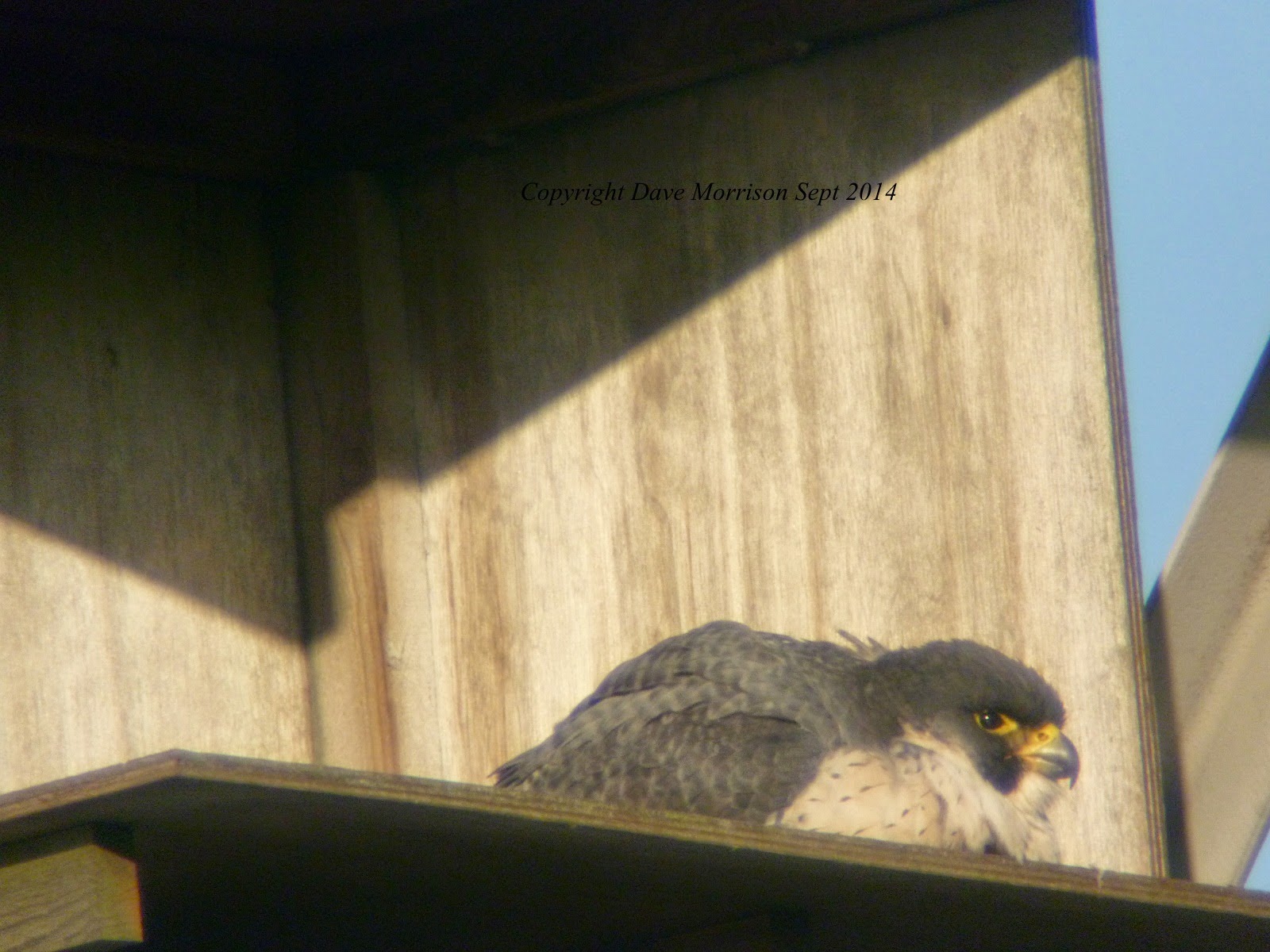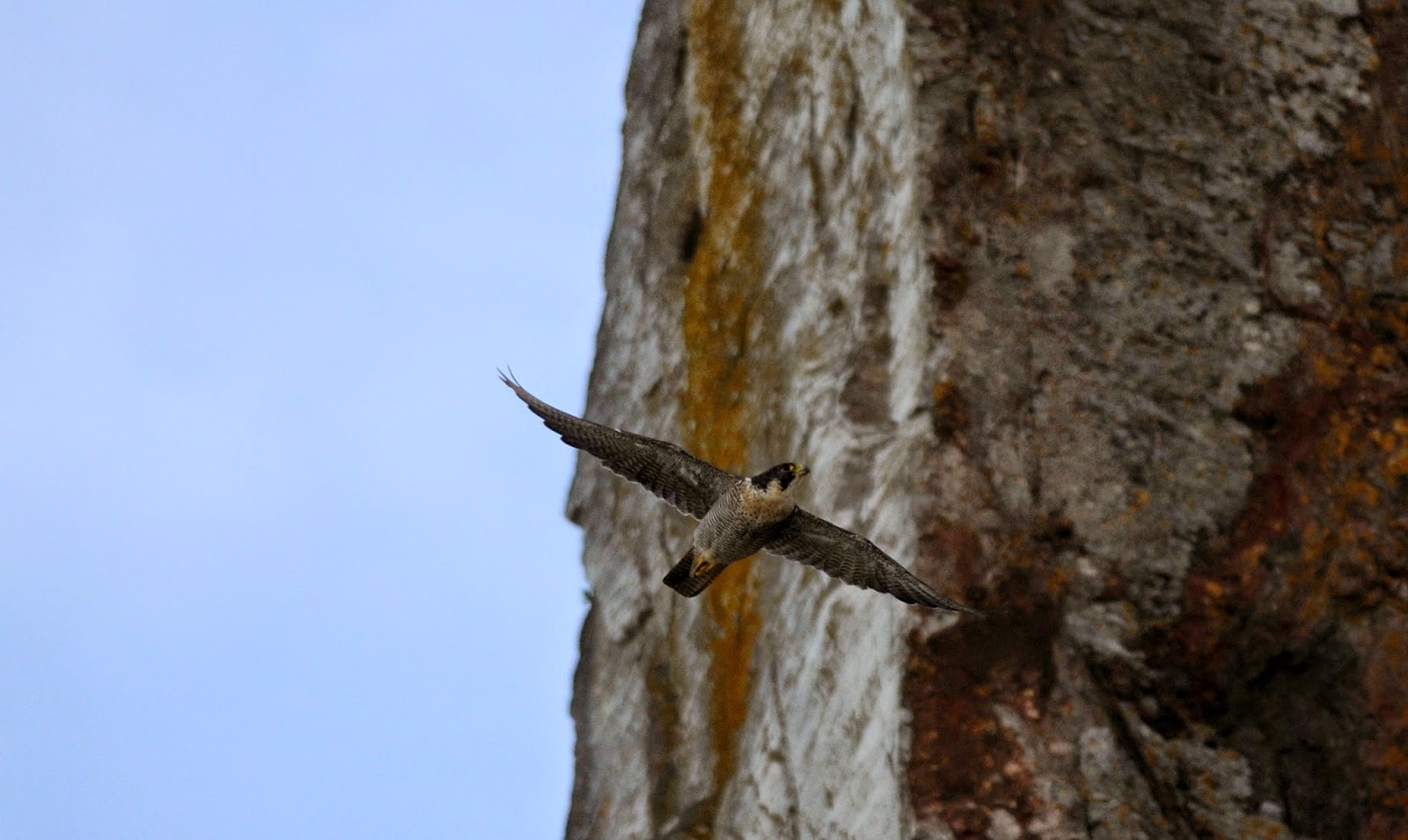Updated Website
I have at long last overhauled my London Peregrines website; hopefully it will prove more interesting and helpful as more thought has gone into the new version – www.londonperegrines.com
I will be adding to it as I go along and intend to create a new photo Gallery.
One thing that I have touched on due to the density of Peregrines in London is nest boxes, with so many new Buildings/Structures changing the skyline, many will, and have already placed nest boxes.
I am hoping that the issue can be addressed and have approached it on the following link –
http://www.londonperegrines.com/services/developers.php
I must make it clear that this is not me trying to corner the nest box market in London, so that New Buildings use one of my boxes. My concern is that an established pair who already have a nest box or a tray, on an ideal building for breeding and fledging, could be tempted over to another building which is totally unsuitable for breeding let alone fledging.
If a settled pair have had expenditure put in position for them in terms of CCTV (not cheap) and have also arranged all there maintenance work to fall outside the licence period, to then lose them is not good.
It is likely that if a new nest box is placed close to another pairing, and if accepted by another pair or even a single Falcon or Tiercel, it could likely lead to fights and disruption in breeding.
I will be adding to it as I go along and intend to create a new photo Gallery.
One thing that I have touched on due to the density of Peregrines in London is nest boxes, with so many new Buildings/Structures changing the skyline, many will, and have already placed nest boxes.
I am hoping that the issue can be addressed and have approached it on the following link –
http://www.londonperegrines.com/services/developers.php
I must make it clear that this is not me trying to corner the nest box market in London, so that New Buildings use one of my boxes. My concern is that an established pair who already have a nest box or a tray, on an ideal building for breeding and fledging, could be tempted over to another building which is totally unsuitable for breeding let alone fledging.
If a settled pair have had expenditure put in position for them in terms of CCTV (not cheap) and have also arranged all there maintenance work to fall outside the licence period, to then lose them is not good.
It is likely that if a new nest box is placed close to another pairing, and if accepted by another pair or even a single Falcon or Tiercel, it could likely lead to fights and disruption in breeding.
All I ask is that Planners/Developers/Architects, if considering trying to attract Peregrine Falcons, please contact myself or the London Peregrine Partnership beforehand to seek advice.
Many people do not realise the implications of Schedule 1 and London Peregrines, from February 1st until early to mid July minimum, wherever they are nesting becomes off limits to one and all, there are no exceptions.
For clarification, if a new high rise building, a nest box is installed and accepted by a pair, the following applies.
1. No roof access to anyone in the licence period
Many people do not realise the implications of Schedule 1 and London Peregrines, from February 1st until early to mid July minimum, wherever they are nesting becomes off limits to one and all, there are no exceptions.
For clarification, if a new high rise building, a nest box is installed and accepted by a pair, the following applies.
1. No roof access to anyone in the licence period
2. Windows cannot be cleaned in the licence period if a roof rig
3. If Mobile Phone Masts/Dishes present on the roof these cannot be accessed in the licence period.
4. If an emergency arises which requires roof access, a Schedule 1 licence holder has to be present, currently myself and Dave Johnson in London, additionally NaturalEngland have to be notified. In these cases it has to be shown to the licence holder that it is a genuine emergency, if not access will be denied.
As you can see Schedule 1 laws will not suit everyone on new modern buildings, I haven’t even mentioned reflective glass and the danger of window strike, height and a lack of ledges for fledging juveniles…….
3. If Mobile Phone Masts/Dishes present on the roof these cannot be accessed in the licence period.
4. If an emergency arises which requires roof access, a Schedule 1 licence holder has to be present, currently myself and Dave Johnson in London, additionally NaturalEngland have to be notified. In these cases it has to be shown to the licence holder that it is a genuine emergency, if not access will be denied.
As you can see Schedule 1 laws will not suit everyone on new modern buildings, I haven’t even mentioned reflective glass and the danger of window strike, height and a lack of ledges for fledging juveniles…….












.JPG)
.JPG)
.JPG)
.JPG)









































